Cash to Cashless: Mastering Asia's $100B Mobile Payment Transformation
BUSINESS TIPSASIA BUSINESS FACTS
Alan Wong
8/1/202411 min read
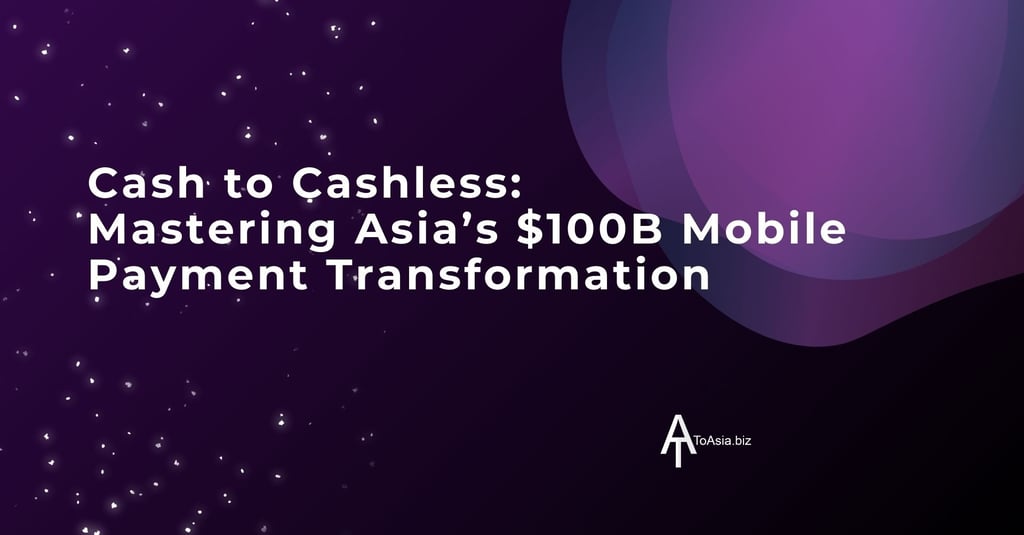

Asia's financial landscape is undergoing a seismic shift.
The rapid transition from cash to cashless payments is reshaping economies across the continent at an unprecedented pace.
Key points of mobile payment transformation:
Mobile payments are at the forefront, driving remarkable change
The Asia-Pacific mobile payments market was valued at USD 50.59 billion in 2023
Projections show it reaching USD 114.42 billion by 2030, with a CAGR of 11.4%
Why mobile payments matter:
They're not just a convenience – they're a catalyst for economic growth
They're bridging gaps in financial inclusion, especially in developing regions
They're spurring innovation in fintech, e-commerce, and beyond
Driving factors:
Increased smartphone penetration across the region
Changing lifestyles and online retailing trends
Government initiatives and support from large businesses
Get ready to master the mobile payment transformation that's redefining Asia's economic future.
Conclusion: Asia's Mobile Payment Revolution
Asia's mobile payment revolution is reshaping the financial landscape:
The market is exploding valued at USD 50.59 billion in 2023
Innovation is driving growth, from super-apps to blockchain integration
Balancing act:
Cash still plays a crucial role, especially in informal economies
Hybrid systems are emerging, bridging traditional and digital methods
Financial inclusion is improving, but challenges remain in rural areas
The future looks promising:
Continued technological advancements will enhance mobile payment security and user experience
Cross-border solutions will facilitate seamless regional transactions
Government initiatives will further boost digital financial inclusion
As Asia leads the global shift towards cashless societies, businesses must adapt to thrive in this new era of digital finance.
Ready to navigate Asia's dynamic mobile payment landscape?
ToAsia.biz is your trusted partner for expanding your business in Asia.
Our business consultants provide tailored strategies to help you achieve success in this rapidly evolving market.
Contact us today to unlock the potential of Asia's digital economy for your business.
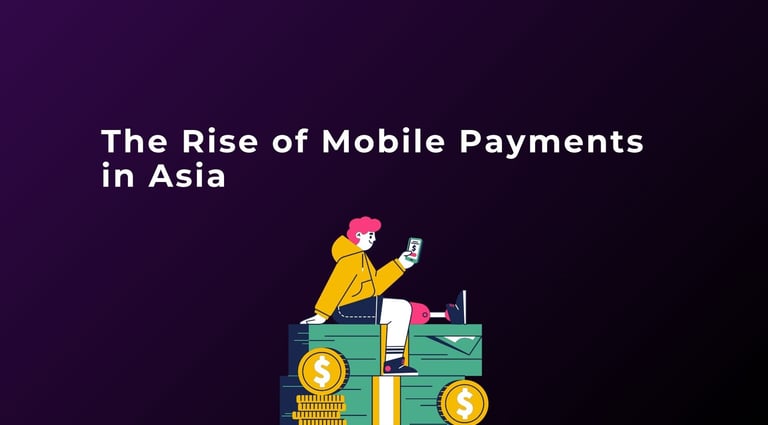

The Rise of Mobile Payments in Asia
Asia's journey from cash to digital has been nothing short of revolutionary.
Key Drivers of Mobile Payment Adoption:
Smartphone and internet boom:
As of 2021, India alone had over 1.18 billion mobile connections
700 million internet users in India, with numbers rising sharply each quarter
Affordable smartphones flood the market, making digital finance accessible to all
Government initiatives:
China: Government support for fintech innovation and digital yuan development
India: Digital India campaign and UPI implementation
Singapore: Smart Nation initiative promoting cashless society
Thailand: PromptPay system for instant bank transfers
COVID-19 impact:
Contactless payments surge to reduce virus transmission
E-commerce adoption skyrockets during lockdowns
Government advisories promoting digital transactions (e.g., China's MOFCOM and NHC notice)
Asia's mobile payment revolution isn't just changing how people pay.
It's reshaping entire economies, driving financial inclusion, and setting the stage for a digital-first future.
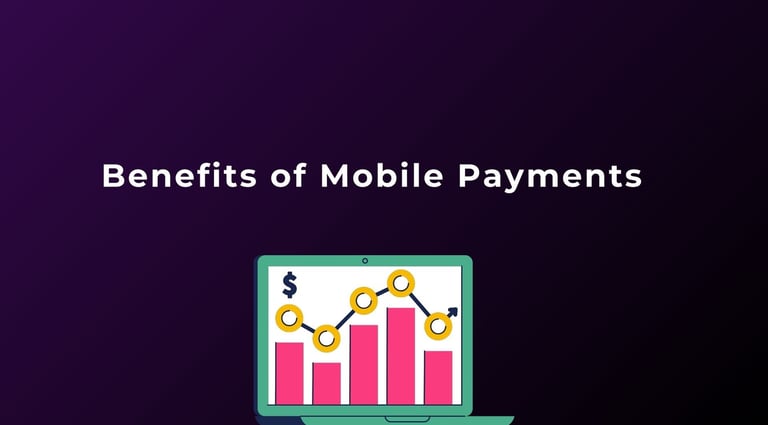

Benefits of Mobile Payments
The mobile payment revolution isn't just about technology—it's about transforming lives and businesses.
Let's dive into the key benefits:
Convenience and Efficiency of Mobile Payment
For consumers:
Pay anytime, anywhere with just a smartphone
No need to carry cash or cards
Quick transactions: scan, tap, or click to pay
Real-time transaction history and budget tracking
For businesses:
Faster checkout times, reducing queues
Simplified bookkeeping with digital transaction records
Reduced cash handling costs and risks
Seamless integration with e-commerce platforms
Tangible impacts:
50% reduction in transaction times compared to cash
Cost savings on payment processing e.g. cash storage, bank-in for small businesses
Security Enhancements of Mobile Payment
Multi-factor authentication:
Biometric verification (fingerprint, face recognition)
OTP (One-Time Password) for additional security
PIN or pattern locks on devices and apps
Data encryption:
End-to-end encryption for all transactions
Tokenization to protect sensitive financial data
Secure cloud storage of transaction history
Compared to cash:
Eliminates risk of physical theft
Reduces money laundering opportunities
Provides clear audit trails for all transactions
Financial Inclusion of Mobile Payment
Reaching the unbanked:
Mobile payments provide first entry to formal financial services
No need for traditional bank accounts or credit history
Impact on rural communities:
Access to digital payments without physical bank branches
Ability to receive remittances quickly and cheaply
Participation in e-commerce and online marketplaces
Empowering small businesses:
Lower barrier to entry for accepting non-cash payments
Access to micro-loans based on digital transaction history
Ability to reach customers beyond local geography
Real-world results:
In India, 79% of adults now have bank accounts ; source IndiaTimes
China's Alipay and WeChat Pay serve over 1 billion users each, many previously unbanked
In Southeast Asia, $22 billion in 2019 and is predicted to grow more than fivefold exceed $114 billion by 2025; source from PwC
Mobile payments are not just a technological shift—they're a socio-economic revolution.
They're making transactions faster, safer, and more accessible, bridging gaps between urban and rural, banked and unbanked.
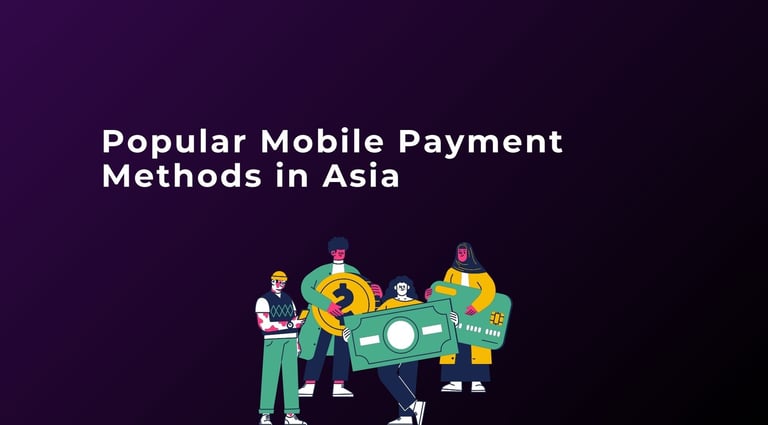

Popular Mobile Payment Methods in Asia
Asia's mobile payment landscape is diverse and dynamic.
Let's explore the key players in major markets:
Mobile Payment in China
Alipay and WeChat Pay dominate:
Combined market share exceeds 90%
Over 1 billion active users each
Integration of services:
Seamless blend of social media, e-commerce, and payments
Users can shop, chat, and pay within a single app
Mini-programs within apps create entire ecosystems
Mobile Payment in India
Paytm and PhonePe lead the charge:
Paytm: Over 350 million registered users
PhonePe: 300+ million users, processes 2 billion+ transactions monthly
Government's Digital India campaign impact:
UPI (Unified Payments Interface) revolutionizes transactions
Rapid adoption in both urban and rural areas
Mobile Payment in Southeast Asia
Regional players on the rise:
GrabPay: Available in 6 countries, part of Grab's super-app
Offer ride-hailing, food delivery, and financial services
Create sticky ecosystems, increasing user retention
GoPay: Indonesia's leading digital wallet
Boost: Malaysia's homegrown digitbank, 9 million+ users
Mobile Payment in Japan
Diverse payment landscape:
PayPay: The largest mobile payment app, around 49% of consumers in Japan utilize it
Line Pay: Integrated with a popular messaging app
Rakuten Pay: Part of Rakuten's e-commerce ecosystem
Apple Pay and Google Pay: Growing in popularity for contactless payments and linking their Suica, PASMO, or ICOCA cards
Mobile Payment in South Korea
Tech giants lead the way:
Naver Pay: Most widely used, integrated with Naver platform with 30% of consumers preferring Naver
Samsung Pay: Uses MST and NFC for wide compatibility
Kakao Pay: Linked to KakaoTalk, offers diverse financial services with 51% of consumers preferring Kakao
Toss and Payco are the two most common digital wallets
Mobile Payment in Taiwan
LINE Pay: Dominates due to LINE app integration
JKOPay: High penetration in physical shops and restaurants
Taiwan Pay: Government-backed and you need to have a passbook saving account to register
Mobile Payment in Australia
Apple Pay: Leading contactless payment at points of sale
Google Pay: Popular among Android users
EFTPOS: Prevalent local payment system which is the interbank electronic payment system network
Klarna: Gaining traction with buy-now-pay-later option
Key takeaways:
Each region has unique leaders and preferences
Integration with social media and e-commerce is crucial
Government initiatives play a significant role in the adoption
Super-apps are reshaping the payment landscape
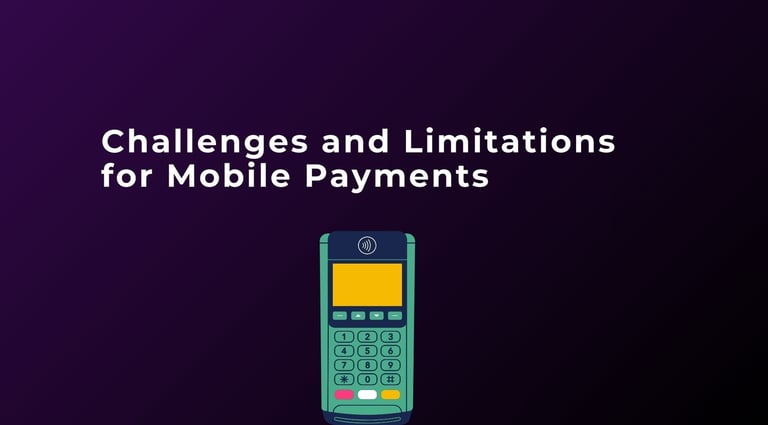

Challenges and Limitations for Mobile Payments
While mobile payments are revolutionizing Asia's financial landscape, significant hurdles remain.
Infrastructure Issues of Mobile Payment
Connectivity challenges:
Unreliable electricity in remote regions
Limited 4G/5G coverage outside urban centers
Hardware dependencies:
Smartphone penetration varies widely (e.g., 32% in India vs. 88% in South Korea)
POS terminal availability is limited in smaller businesses
System vulnerabilities:
Recent CrowdStrike and Microsoft errors highlighted fragility
When POS systems fail, mobile payments grind to a halt
Backup systems often lacking, especially in smaller establishments
Digital Literacy of Mobile Payment
Demographic disparities:
Elderly population struggles with digital adoption
Rural communities often lack exposure to digital technologies
Literacy challenges:
More than 480 million people in Asia are illiterate
Complex app interfaces pose barriers for less educated users
Progress indicators:
Digital literacy rates improving (e.g., 61% in India urban areas and 25% in India rural areas)
But pace of technology often outstrips education efforts
Privacy and Security Concerns of Mobile Payment
Data breach risks:
In 2023, 35% of APAC organizations say they have experienced data breaches costing anywhere from US$1m to US$20m over the last three years ; source PwC
Cybercriminal activities:
Phishing attacks rose 220% during COVID-19 pandemic
Malware attacks surge 30% in the first half of 2024; source Infosecurity Magazine
Common user concerns:
Financial losses from unauthorized transactions
Identity theft leading to fraudulent accounts
Privacy infringement through data mining
Cybersecurity measures:
Biometric authentication reduces fraud by 50% when implemented
Blockchain technology enhancing transaction security
AI-powered fraud detection systems show high accuracy in some cases
Cultural and Economic Barriers of Mobile Payment
Cash preference:
56% cash payments of point-of-sale (POS) in Thailand
46% cash payments of point-of-sale (POS) in the Philippines
45% cash payments of point-of-sale (POS) in Indonesia
42% cash payments of point-of-sale (POS) in Vietnam; source Forbes
Informal economies rely heavily on untraceable cash transactions
Cultural attachments:
Red envelopes tradition in China is adapting slowly to digital formats
Religious practices (e.g., alms-giving) are traditionally cash-based
Economic factors:
Concerns about overspending with 'invisible' digital money
Merchants avoiding digital payments to underreport income
Positive trends:
COVID-19 accelerating shift away from cash
Younger generations are driving the cultural shift toward digital payments
While mobile payments offer immense benefits, overcoming these challenges requires concerted efforts from governments, businesses, and technology providers.
The path forward involves not just technological solutions, but also addressing social, cultural, and educational barriers.
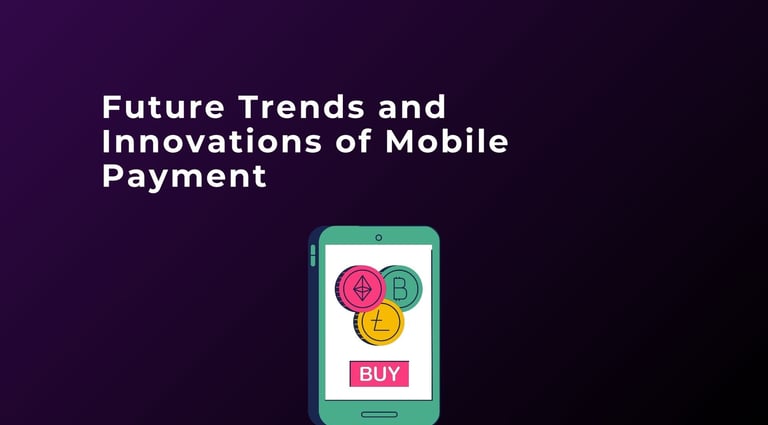

Future Trends and Innovations of Mobile Payment
Asia's mobile payment landscape is evolving rapidly.
Let's explore the cutting-edge trends shaping its future:
Super-Apps and Ecosystem Integration
Rise of all-in-one platforms:
Super-apps combine multiple services in a single interface
Payment functionality serves as the backbone for wider ecosystems
Growth statistics:
WeChat: 1.35 billion monthly active users at the end of March 2024
Grab: 38.5 million users in Q1 2024
Successful examples:
LINE (Japan): Messaging, payments, shopping, and more
Grab (Southeast Asia): Ride-hailing, food delivery, financial services
Paytm (India): Payments, banking, investments, and e-commerce
Benefits:
Increased user engagement: 3x higher than single-function apps
Enhanced data collection for personalized services
Reduced customer acquisition costs for new services
Challenges:
Data privacy concerns with centralized user information
Potential for monopolistic practices
Regulatory scrutiny in multiple sectors
Cross-Border Payment Solutions
Unified QR codes:
ASEAN QR Code standard: Adopted by Malaysia, Singapore, Thailand, Philippines. Vietnam and Brunei will join in August 2024. It aims for regional interoperability. Source Fulcrum
EMVCo's Merchant-Presented QR: Global Standard Gaining Traction which enables merchants to provide their customers with a wide range of payment options using one QR code at checkout
API adoption:
Open banking initiatives driving API standardization
Example: India's UPI now linking with other countries' systems like Singapore, Malaysia, UAE etc.
Real-time cross-border linkages:
PayNow (Singapore) : Make or receive payments while you are outside of Singapore
FPS (Hong Kong) and PromptPay (Thailand): Travellers from Thailand and Hong Kong will be able to make retail payments by using mobile payment applications.
Airwallex, a global fintech partner to let businesses accept payments from 180+ countries, hold 20+ currencies
Aim to reduce remittance costs below 3%; Airwallex pay fees as low as 0.2% of the interbank rate
The future of mobile payments in Asia is not just about transactions—it's about creating seamless, integrated experiences that blend finance with daily life.
As technologies converge, we're moving towards a world where payments become invisible, embedded into every digital interaction.
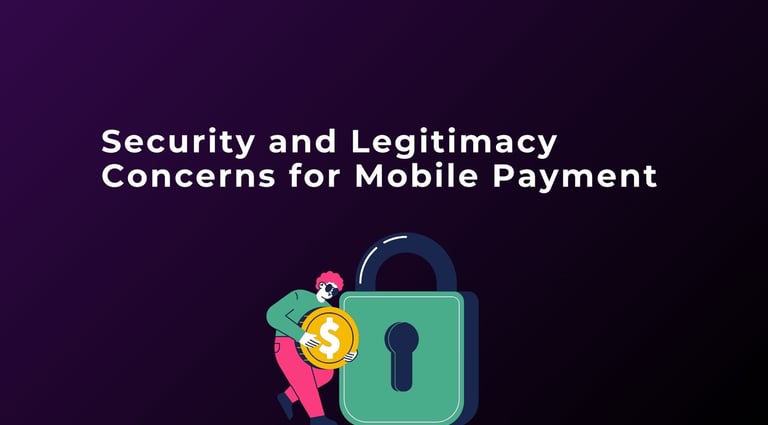

Security and Legitimacy Concerns for Mobile Payment
As mobile payments soar, so do the risks.
Mobile Payment Security Threats
Cybercriminal tactics:
Phishing attacks rose 220% during COVID-19 pandemic
Malware attacks surge 30% in the first half of 2024; source Infosecurity Magazine
Man-in-the-middle attacks: Intercepting data on unsecured Wi-Fi networks
Real-world impacts:
Singapore: The total number of scam and cybercrime cases rose by almost 70% to 24,525 cases in the first half of 2023, from 14,481 cases in the same period in 2022. Source: CNA
India: the number of security incidents has surged from 53,117 in 2017 to 1.32 million between January and October 2023. Source: RBI
Japan: 359% increase in online banking fraud cases in 2023 vs 2022. Source: Statista
Enhancing Security of Mobile Payment
Multi-layered defense strategies:
Strong passwords: Enforcing complex combinations, regular changes
Two-factor authentication (2FA): 99.9% effective in blocking automated attacks
Encryption: End-to-end protection for data in transit and at rest
Tokenization: Replacing sensitive data with unique tokens
Biometric verification: 90% of users prefer biometrics over passwords
Key security measures:
Regular app updates: Patching vulnerabilities within 30 days of discovery
Seller verification: Reducing fraudulent merchant accounts by 60%
User education: 95% of cybersecurity breaches due to human error
Emerging technologies:
AI-powered fraud detection: Identifying suspicious patterns in real-time
Blockchain: Enhancing transparency and reducing fraud by 50% in pilot programs
Regulatory Measures of Mobile Payment
Global standards:
PCI DSS (Payment Card Industry Data Security Standard):
Mandatory for handling card payments
12 key requirements for secure data handling
PSD2 (Payment Services Directive 2):
European Regulation Influencing Global Practices
Enforces strong customer authentication (SCA)
Data protection:
GDPR (General Data Protection Regulation):
Sets standards for data privacy worldwide
Fines up to €10 million or 2% of global turnover for violations
Anti-Money Laundering (AML) and Countering Financing of Terrorism (CFT):
FATF (Financial Action Task Force) recommendations:
40 guidelines for combating financial crimes
Adopted by 200+ countries
Know Your Customer (KYC) requirements:
Reducing anonymous transactions
Decreasing in money laundering activities where implemented
Compliance challenges:
Varied regulations across Asian countries
High costs: Up to 10% of revenue spent on compliance by some firms
Balancing innovation with security: Sandbox approaches gaining popularity
Security in mobile payments is a constant battle between innovation and risk mitigation.
While threats evolve, so do protective measures.
Regulatory frameworks play a crucial role in ensuring a secure ecosystem, but they must evolve rapidly to keep pace with technological advancements.
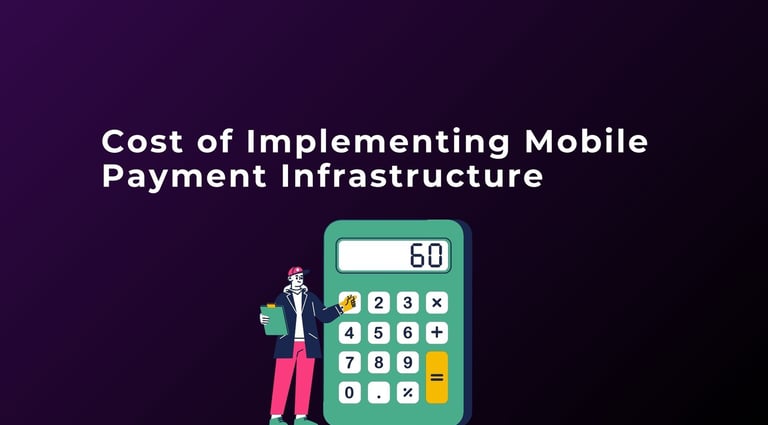

Costs of Implementing Mobile Payment Infrastructure
Embracing mobile payments isn't free.
All cost indicators are average for reference purposes only.
Hardware Costs of Mobile Payment
NFC-enabled POS systems:
Basic card readers: USD$20 - $100
Advanced touchscreen terminals: USD$199 - $800
Full-featured POS systems: USD$1,000 - $2,500
Mobile devices:
Smartphones for staff: USD$200 - $800 per device
Tablets for countertop use: USD$200 - $1,000 each
ROI considerations:
Hardware costs often recouped within 6-12 months
Increased transaction speed can boost sales by 15-30%
Software Costs of Mobile Payment
Subscription models for Cloud-based POS system:
Basic plans: USD$10 - $100 per month
Advanced features: USD$50 - $200+ per month
Pricing factors for subscription:
Number of users or devices
Transaction volume
Additional features (inventory management, analytics)
Custom development:
Mobile app development: USD$10,000 - $100,000+
Integration with existing systems: USD$5,000 - $50,000
Transaction Fees of Mobile Payment
Transaction Fee structures:
Percentage of transaction: 1-3% typical range
Variations by provider and location:
PayPal US : 2.29% + $0.09 per transaction
Square Japan: 3.25%+ Source Square
Stripe Singapore: 3.4% + SG$0.50 per successful charge for domestic cards. Source Stripe
Hidden costs:
Currency conversion fees for international transactions: 1-3% additional
Chargeback fees: $15 - $100 per incident
Implementing mobile payment infrastructure involves significant upfront and ongoing costs.
However, the potential for increased sales, improved efficiency, and enhanced customer satisfaction often justifies the investment.
Businesses must carefully analyze their specific needs and transaction volumes to determine the most cost-effective solution.
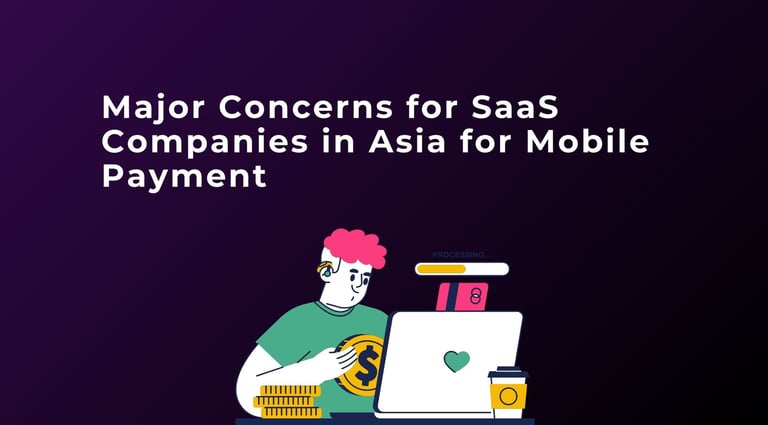

Major Concerns for SaaS Companies in Asia for Mobile Payment
SaaS companies in Asia's mobile payment sector face unique challenges.
Data Security for Mobile Payment
Robust protection measures:
Encryption: 256-bit AES encryption is now standard
Tokenization: Replacing sensitive data with unique identifiers
Multi-factor authentication: Reducing unauthorized access by 99.9%
Breach prevention strategies:
Regular penetration testing: Identifying vulnerabilities before hackers
AI-powered threat detection: Real-time monitoring of suspicious activities
Secure coding practices: Reducing software vulnerabilities by up to 75%
Impact on SaaS companies:
Increased development costs: Up to 30% of the budget allocated to security
Longer time-to-market: Security reviews adding weeks to release cycles
Reputation risks: 60% of small companies go out of business within 6 months of a data breach
Regulatory Compliance of Mobile Payment
Complex landscape:
Lots of countries in Asia and each with unique regulations
Varying levels of digital payment adoption and regulation maturity
Key regulatory areas:
Anti-Money Laundering (AML): Stringent KYC requirements
Data localization: Mandates in China, Vietnam, and Indonesia
Licensing: E-money licenses required in many countries
Staying updated:
Partnerships with local legal experts: Essential for navigating nuances
Continuous staff training: Quarterly updates on regulatory changes
Customer Trust of Mobile Payment
Building trust:
Transparency: Clear fee structures and terms of service
Security certifications: PCI DSS, ISO 27001 displaying commitment to security
User education: In-app tutorials and security best practices
Addressing concerns:
Fraud protection: Zero-liability policies for unauthorized transactions
Dispute resolution: Quick and fair processes for transaction issues
Privacy controls: Giving users control over data-sharing preferences
Innovation and Competition
Innovation focus areas:
Blockchain: 55% of SaaS companies exploring blockchain integration
AI and machine learning: Personalizing user experiences and fraud detection
Open banking APIs: Enabling seamless integration with other financial services
Challenges in innovation:
Balancing innovation with security: 45% of companies struggle to maintain this balance
Regulatory constraints: Sandboxes and regulatory exemptions becoming common
SaaS companies in Asia's mobile payment sector must navigate a complex landscape of security threats, regulatory requirements, and customer expectations.
Success hinges on balancing robust security measures with user-friendly innovations, all while maintaining unwavering compliance with diverse regulatory frameworks.
Those who can master this balancing act are poised to thrive in one of the world's most dynamic digital payment markets.
Related Asia business insights and blogs that you may also like:
The Ocean Strategy Hacks to Skyrocket Your Asian Market Presence
Why Ignoring Asia's Payment Challenge is a Big Mistake?
7 Steps to Master Your Go-To-Market Strategy in Asia
Crafting a Winning Business Plan: A Detailed Business Plan Example


Alan Wong is founder of ToAsia.biz and a startup mentor with over 20 years of professional experience managing software, Saas and consulting services MNCs.
About Author
Copyright © 2025 ToAsia.biz


We lead your business to Asia
Our Business Growth Experts help SaaS businesses achieve growth in Asia and become profitable FAST.
Send us a message via WhatsApp
